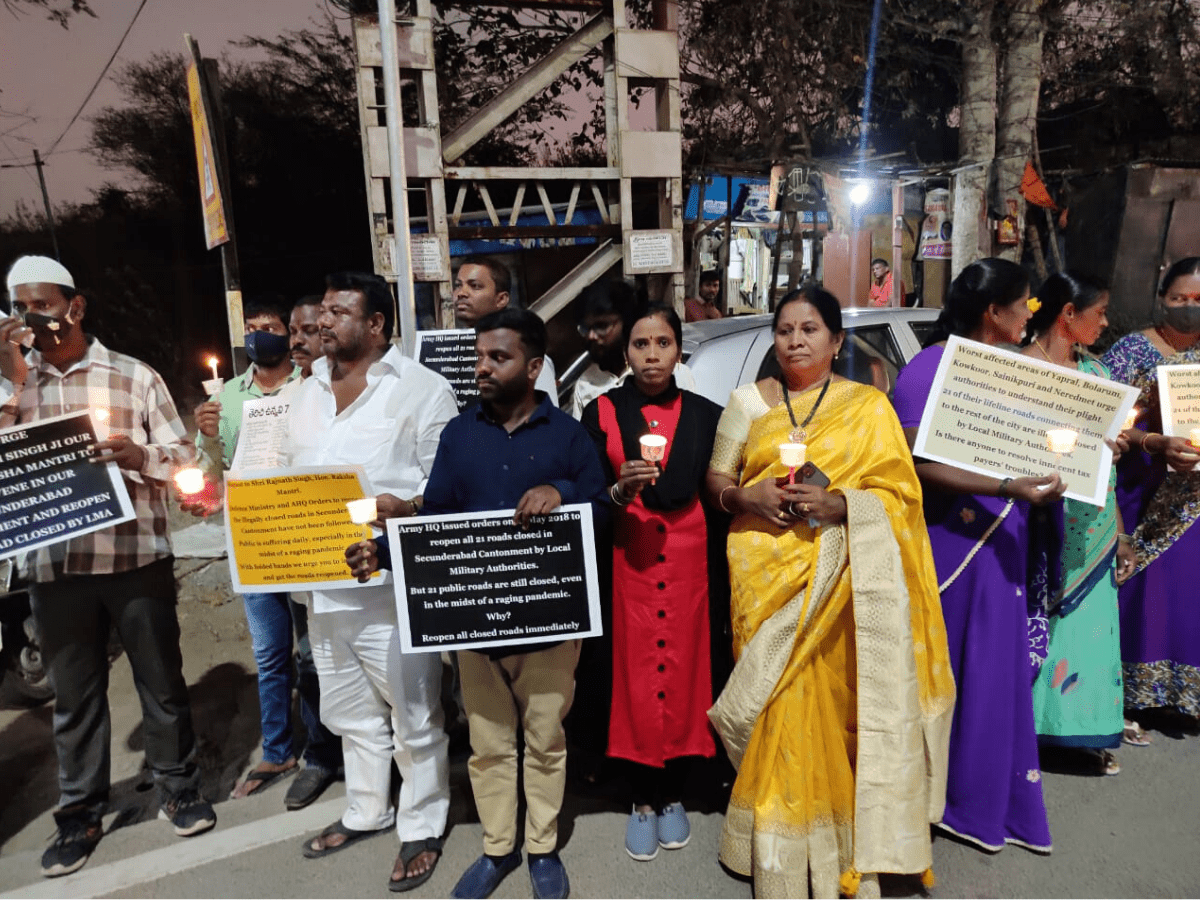
Hyderabad: IT minister KT Rama Rao’s (KTR) statement in the Telangana assembly last week drew harsh comments from a retired Army major on Twitter. Shaurya Chakra awardee Maj. Pawan Kumar on Monday called the Minister a “joker” and other things in a now-deleted tweet. On the same day, residents living in the area also held a protest against various road closures imposed by the Indian Army.
KTR essentially said that if the Army would continue to block roads in the cantonment area, the government will cut power and water supply.
The IT minister said, “We will cut power and water supply if needed to military authorities (Cantonment limits) because it is not fair to close the roads whenever they want.”
After his abusive tweet, the retired army man deleted his tweet, which has been since saved by others on Twitter, who questioned his choice of words. The entire issue is about areas in Hyderabad, which fall under the Secunderabad Cantonment Board in the Army areas. Citizens there constantly face issues as the Army has been closing roads arbitrarily for many years, due to various reasons.
Residents of the Secunderabad cantonment and its surrounding area also took to the streets on Monday to protest the LMA’s (Local Military Authority) illegal closure of public roads. A signature campaign along with a candlelight march was organised in the RK Puram area. More protests are expected in the area in the coming days.
This issue has been once again highlighted after KTR’s statements in the Assembly and has been a problem for a very long time for residents, who have to take long detours to commute. Some of the routes, like the AOC-Marredpally one, were first closed for fixed hours in 2011-12, and later were totally shut for public use in January 2014 after which citizens approached the High Court for relief.
The state government maintained that the court order, dated 2014, allows the LMA to close the roads. According to residents, however, a lot of information was not presented before the court before it led to this order being passed. The primary reason the LMA gave for closing roads, is that those are ’A1 defence’ roads as per the Military’s classification, which meant they were fully under its control.
However, petitioners (the affected citizens) found that A1 land and A1 roads are not the same. A separate rule stated that a public road maintained by the Military Engineering Services (MES) would be classified A1 while the same maintained by SCB (Secunderabad Cantonment Board) would be classified C.
Pankaj Sethi, a resident of the Cantonment area, said that citizens living in the affected places have compiled information and brought it to the notice of then defence minister N. Sitharaman, which ultimately ended in the army headquarters issuing orders to open the roads. However, that never happened.
“Citizens don’t have the time to run around courts, and they don’t care who maintains the roads. The public is being inconvenienced because of the road closures, and this has been acknowledged by the concerned authorities before, but there’s been no change to the status quo,” he says.
History of Secunderabad
Secunderabad is named after the third Nizam of Hyderabad, Sikander Jah (1803-26), during whose time the British East India Company, was asked to move its army out of Hyderabad and into a cantonment area. Secunderabad was officially founded in 1806.
The development happened after the second monarch of the Hyderabad state, Nizam Ali Khan (1762-1803), signed an agreement with the British, called the Treaty of Subsidiary Alliance (1798). Under that, the Nizams agreed to pay the British an annual sum for keeping its troops in Hyderabad, which would be maintained by the rulers (to use as and when necessary).
